Is it dangerous to drive with a bad ball joint in a car? Yes, it is not only dangerous but can be fatal to some extent. Some people have a misconception about the cost of a ball joint and the consequences of neglecting a bad ball joint.
A ball joint is part of the suspension system that deals with steering capacity. Nowadays, cars have a ball joint that lasts till the lifespan of a car. Cars that regularly use on bumpy and unmaintained roads are subject to wear and tear.
Let’s explore some vital risk that comes with a bad ball joint.
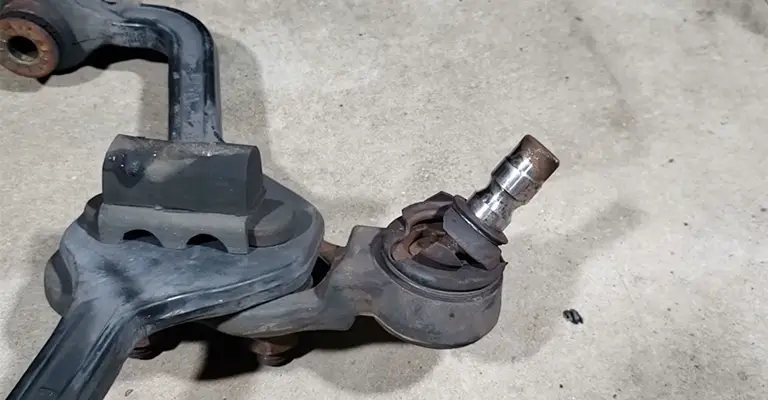
What Are Ball Joints and Their Location?
To know if is it dangerous to drive with a bad ball joint in a car, we should take a quick look at what a ball joint is and its location in a car.
The ball joint is a spherical bearing that almost looks like a ball and it fits and moves inside a small socket in a car.
A ball joint is part of a car’s suspension system and connects the wheels and tires of the car to the suspension system using a control arm. It is lubricated with grease and dust sealed. They allow the front wheel to move left and right, up and down.
There are two variants of ball joints; upper and lower, depending on your car’s make and model. These are located on the front suspension system to smooth the movement of the suspension. Nowadays, ball joints are sealed so they need to be replaced, not serviced.
Is It Dangerous to Drive with a Bad Ball Joint?
There are several dangers to driving with a worn ball joint. Check below for some of them:
Tire Replacement
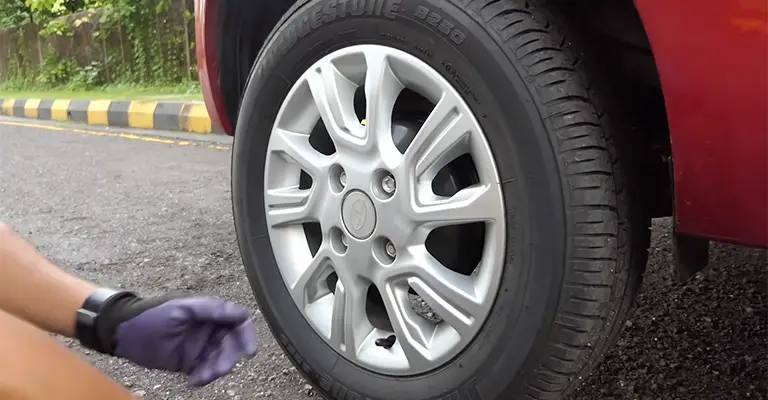
Ball joints are planned to keep your tire flat against the road. A failed ball joint can cause the wheel to move in whatever direction and causes uneven tire wire. So repeated tire replacement is required.
Suspension Damage
A lock-up ball joint results in a direction that does not go anywhere. So, movement is transferred to another component that is not responsible for the initiation of movement. However, this movement initiated from a bad ball joint ultimately damages any component of the suspension system.
Failure to Pass the Inspection
Some countries require vehicle inspection to ensure the safety of individuals and the people around them. You will face trouble if a bad ball joint is found during an inspection. According to law, no state will pass a faulty vehicle, such as a bad or worn ball joint, to run.
Cracking of a Ball Joint
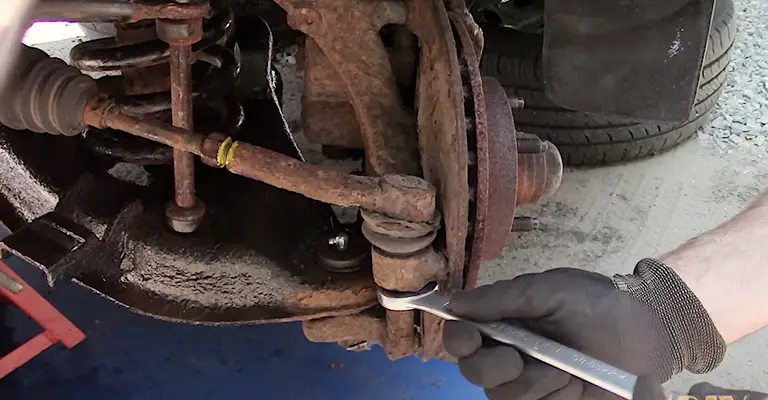
The wheel is free to move with the breakage of the ball joint. Cracking a ball joint can be sudden and worse things can happen with a bad ball joint. No matter how it cracks or breaks, the result is devastating.
Typically, by slamming against the fender, the wheel will go outward until it breaks completely, which will cost you a lot.
How To Check Your Ball Joints
You can check your ball joint by yourself. let’s see some techniques to check them out.
Test Drive
Take your car to the public road and drive it at a defined speed. Pay close attention to the details of the engine and steering performance.
Drive Over a Speed Breaker
Take it to the speed breaker and lower the speed. You should stop and turn a few times.
Turn The Steering Wheel
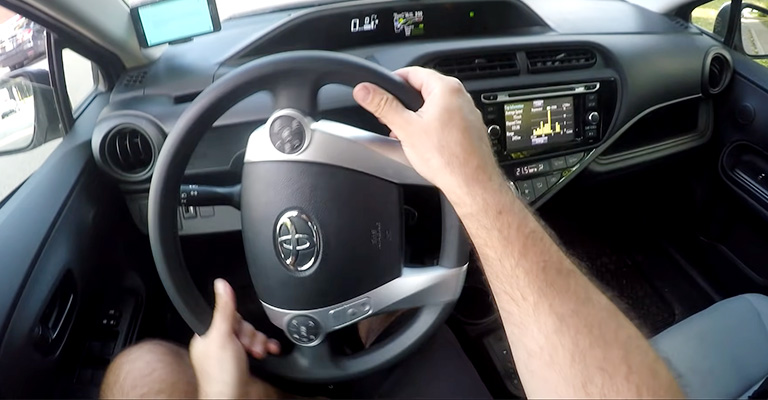
Start bouncing after you park your car, and carefully listen around the vehicle. Bounce the car repeatedly. Take a side of the car, keep your hand on the roof and push it back and forth. Grinding noises indicate a bad ball joint.
Look for The Grease Fitting
Look for the grease fitting to hold and twist it carefully. Replace the ball joint if the fitting moves inside the housing.
Check The Ball Joint’s Up-Down Movement
Support the lower portion of the wheel. Try to see if there is any play in the ball joint. Replace it upon finding any play in the ball joint.
For visual and physical inspection, it would be necessary to have a Jack; Jack stands, a Flashlight, a Pry bar, a Lug nut wrench, and a couple of wood blocks or wheel chocks.
Signs of Loose or Worn Ball Joints
Look out for these signs below that indicate a bad ball joint in your car:
Rattling Noise
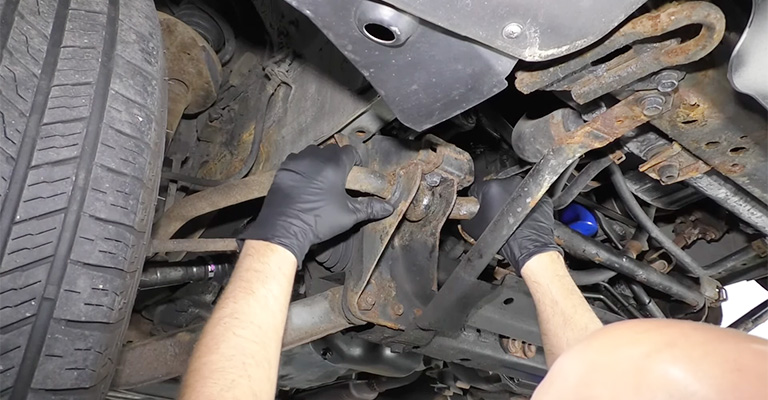
A rattling noise is the very first indication of loose or worn ball joints. This sound usually comes from the corner of the car. The intensity and frequency of this sound increase with driving time. It also increases when the car turns a corner or crosses a bump.
Wandering Steering Feel
Worn or loose ball joints affect the steering and make it sloppy or stiff depending on the ball joint wearing. Vibration or shaking in the steering wheel while driving down a level can be a sign of a bad ball joint as well. This vibration can occur on a straight road, or your vehicle can drift and sing.
Tires
Your ball joints may be worn out if you use damaged tires, such as uneven rupture in a tire. Likewise, if you find that the inner or outer edge of the front tire declines to compare to the rest of the tread, possibly the reason is the worn ball joint.
Squeaking
A rubber boot in the ball joint usually protects and contains grease. When you turn your car, a squeaking sound is found due to damage to that rubber boot. So squeaking or whistling sounds can be another indication of a worn ball joint. Generally, loss of lubrication causes the joint to become noisy.
Pulling to The Side When Driving
When a ball joint is loose, the car’s alignment will be affected, and it will pull the car left and right when driving. Apart from that, poor handling and worn bushings are also signs of loose or worn ball joints.
Should you Drive with a Bad Ball Joint?
You can drive with bad ball joints, but must not because the ball joints affect the steering and suspension system of a car. If a ball joint fails, it results in sudden falling off the wheel of the car, and a big accident is predicted.
How Long Do Ball Joints Last?
Ball joints don’t last forever, and you should expect to replace your ball joints between 70,000 to 150,000 miles of driving. Moreover, its lifespan depends on driving habits and road conditions.
What Causes Them to Wear Out?
A ball joint collapse due to dust, dirt, and impurities getting inside and making it compact. This results in a ball joint got little or no space to move. Drying out lubrication is another cause of hampering its function.
How Long Can You Drive On A Bad Ball Joint?
It depends on the extent of damage to a ball joint. Some can go for five hundred miles without any issue; for others, five miles is a high-risk move. So, as soon you find the symptoms replacing it is a wise decision.
Leave a Reply